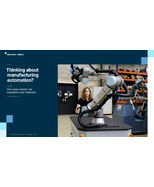Driver Assistance System helps ensure safe lane changing.
Press Release Summary:
Using ultrasonic sensors, Side View Assist blind-spot assistant is capable of registering objects 3 m to side and diagonally to rear of vehicle. If sensors detect vehicle, signal is checked for plausibility by system's electronics to prevent false alarms. System then warns driver optically, and if driver fails to react, it will provide acoustic warning. Working at speeds of 10-140 kph, Side View Assist aids drivers in complex traffic situations when relative speeds are low.
Original Press Release:
Bosch Launches Ultrasonic Blind-Spot Assistant to Enable Safer Lane Changing
o Provides driver assistance in complex traffic situations
o Plausibility checks prevent unnecessary warnings
o Cost benefits in combination with ultrasonic parking sensors
Bosch Automotive has announced that it is launching the Bosch "Side View Assist" blind-spot assistant, an innovative driver assistance system that helps drivers when they are changing lanes and warns them of dangers. Like the Bosch parking aid and parking assistant, the system uses ultrasonic sensors. Because of the combination of several ultrasound-based features, and because the Side View Assist makes use of electronic components already present in the car, the system offers automakers - and thus ultimately car buyers - significant cost savings compared with radar- or video-based systems.
The Side View Assist is capable of registering objects three meters to the side and diagonally to the rear of the vehicle, which means that it covers precisely those areas that are located in the dangerous "blind spot." If the sensors detect a vehicle, their signal is first checked for plausibility by the system's electronics to prevent false alarms. The Side View Assist can then warn the driver in two ways: first optically, and then, if the driver fails to react, acoustically.
Guido Gring, Sales Director of Automotive Aftermarket Division, Robert Bosch Middle East FZE, said, "This is a groundbreaking safety feature that Bosch Automotive has introduced and something that the Middle East markets would warmly welcome. A high percentage of road accidents happen during the lane changing process, mainly because drivers do not see vehicles in their blind-spot, which makes the Bosch Side View Assist an important contribution to road safety."
Four additional sensors to detect the dangers that drivers miss:
The Side View Assist's ultrasonic sensors are mounted in the sides of the vehicle's front and rear bumpers. The two rear-side sensors monitor the blind spot on the lanes to the right and left. The two front sensors are used exclusively for plausibility checks. If, for example, the front left sensor detects an object before the rear left sensor does, it is clear that an oncoming vehicle on the other side of the road is driving by the vehicle in question, and the electronic sensors do not warn the driver. The sensors use the same technique to detect parked vehicles, road signs, etc., and to register when drivers are passing other cars. In those cases, they do not set off an alarm. It is only when one of the rear side sensors reports an object that has not already been detected by the front sensors that danger is imminent. The Side View Assist then warns the driver optically, for example by activating a light signal in the side mirror on the same side on which the object was detected. If the driver misses or ignores this warning and uses the turn signal to indicate a lane change, the Side View Assist can activate an additional acoustic warning signal.
The Side View Assist works at speeds of between 10 and 140 kph. Outside that range, it does not warn drivers. The system aids drivers in complex traffic situations when relative speeds are low, and therefore mostly helps them on urban roads and highways and on multi-lane roads where speed limits are in place. The system warns drivers but does not intervene directly in their actions. Accident statistics show that the majority of lane-changing accidents happen at speeds of under 100 kph. Of those accidents, the majority occur at speeds of 60 kph or less.
The Bosch Side View Assist will make its global debut in the new model of the Citroën C4, which will be launched later this year.
Bosch ultrasonic sensors have been monitoring vehicle surroundings since 1993
Bosch began developing ultrasonic sensors for automobiles as early as 1989. Since production began in 1993, Bosch has produced far more than 100 million ultrasonic sensors, making it the market leader. Initially, ultrasonic sensors were used only as simple proximity warning devices to prevent drivers from denting their cars in parking lots. By 2006 the technology had matured enough for the first parking assistant to be used. It was able to measure the exact length of parking spaces. With the aid of electric power steering, the Bosch parking assistant has been performing all the necessary steering movements for drivers precisely and automatically since 2008, making sure that vehicles maneuver perfectly into their parking spots.
Bosh operates ultra-modern production plants at three sites in Europe, Asia, and North America to produce its ultrasonic sensors and their control units.



